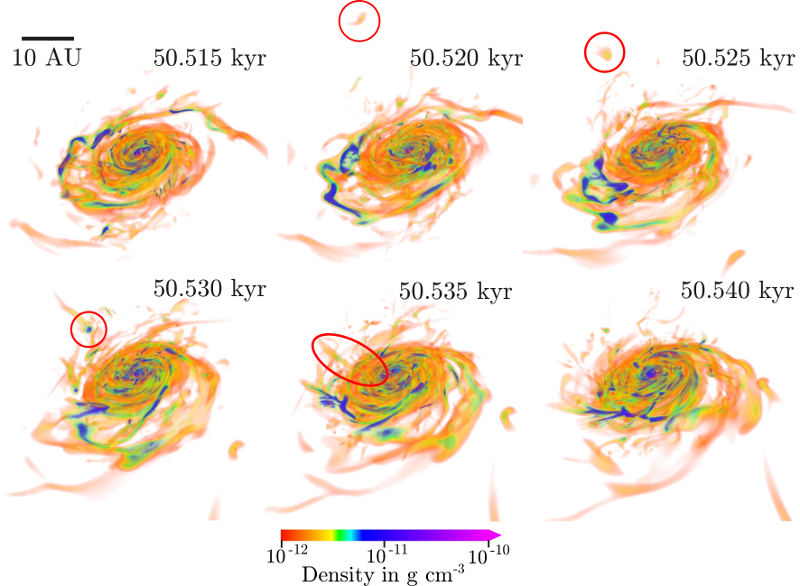
|
EPoS |
|
EPoS Contribution
|
|
The Role of Infall on Young Protostellar Systems
Michael Kueffmeier ITA, Heidelberg, DE | |
| Stars form at different locations in turbulent, magnetized Giant Molecular Clouds. To constrain the effects of the stellar environment, we investigate the effect of infalling material on the accretion process of several low-mass stars and their corresponding disks. The analysis is based on zoom-simulations with a modified version of the adaptive mesh-refinement magnetohydrodynamical code ramses starting from a Giant Molecular Cloud of (40 pc)3 in volume and applying a maximum resolution of 0.06 AU. Our results show that depending on the protostellar environment, the overall accretion profiles vary from star to star. The infall of denser gas "blobs" onto young protostellar systems causes an increase of the accretion rate, and hence enhances the protostellar luminosity. Finally, accounting for the angular momentum of infalling gas initially unbound to the collapsing prestellar core allows us to study the effect of infalling gas on the orientation and properties of protostellar disks. | |
 | |
| Caption: An illustration of a gas "blob" (highlighted by a red ellipse) falling onto a protostellar disk about 50 kyr after star formation. The illustration is based on a zoom-in run with maximum resolution of 0.06 AU. The cadence between the image is 5 years. To enhance the visibility of the infall event, we adopted a non-linear density dependent opacity table such that high densities are more opaque than low densities, and the disc structure becomes as apparent as possible. The figure is adapted from the linked publication Kueffmeier et al. (2017). | |
| Collaborators: T. Haugbolle, NBI/StarPlan, DK S. Frimann, IEEC-UB, ES S.S. Jensen, NBI/StarPlan, DK A. Nordlund, NBI/StarPlan, DK C.P. Dullemond, ITA, DE |
Key publication
Suggested Session: Protostellar disks |